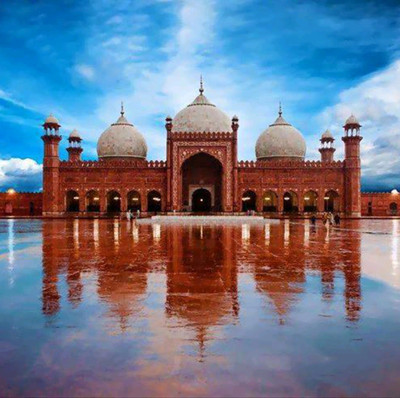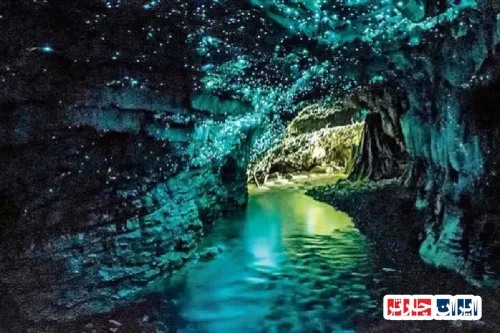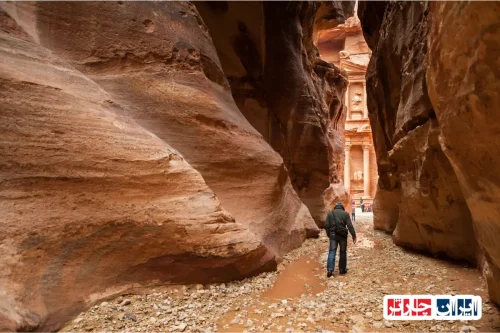Discover the Magnificent Badshahi Mosque Lahore Pakistan: An Icon of History and Architecture
The Badshahi Mosque Lahore Pakistan stands as a testament to the rich cultural heritage and architectural brilliance of the Mughal era. Located in the heart of Lahore, this historic mosque is renowned for its stunning design, intricate craftsmanship, and spiritual significance. As one of the largest mosques in the world, it attracts millions of visitors annually who come to admire its grandeur and learn about its fascinating history. The mosque’s expansive courtyard, majestic domes, and detailed ornamentation exemplify the artistic mastery of Mughal architecture. Visitors can explore the beautifully decorated prayer halls, adorned with elaborate tile work and calligraphy, which reflect the spiritual essence and artistic excellence of the period. Beyond its architectural marvels, the Badshahi Mosque Lahore Pakistan also plays a vital role in the religious and cultural life of Lahore, hosting daily prayers, religious festivals, and cultural events that foster community unity. Its historical significance is further highlighted by its association with key moments in the region’s history, making it a symbol of faith, power, and artistic achievement. Whether you are interested in history, architecture, or spirituality, the Badshahi Mosque Lahore Pakistan offers a profound experience that encapsulates the essence of Lahore’s glorious past and vibrant present. Visiting this iconic monument provides an unparalleled glimpse into the grandeur of Mughal architecture and the enduring legacy of Islamic culture in South Asia.

Historical Significance and Architectural Heritage of Badshahi Mosque Lahore Pakistan
The Badshahi Mosque Lahore Pakistan stands as a monumental symbol of Mughal architecture and Islamic cultural heritage. Built in the 17th century, this iconic mosque exemplifies the grandeur and artistic mastery of Mughal design, combining intricate stone carvings, expansive courtyards, and majestic domes. Its historical significance extends beyond its religious function, serving as a testament to Lahore’s rich history and the Mughal Empire’s influence in South Asia. The mosque’s strategic location and impressive scale have made it a focal point for cultural and political events throughout centuries, shaping the identity of Lahore as a city of heritage and spirituality. Preservation efforts have maintained its structural integrity, allowing visitors and historians to explore its timeless beauty and learn about the architectural innovations of the Mughal era. As a UNESCO World Heritage site, the Badshahi Mosque Lahore Pakistan continues to inspire admiration for its historical importance and architectural brilliance. Its role in fostering community cohesion and religious devotion remains vital to the cultural fabric of Lahore today.
Unique Architectural Features and Artistic Elements of Badshahi Mosque Lahore Pakistan
The architecture of Badshahi Mosque Lahore Pakistan showcases a harmonious blend of Islamic, Persian, and Indian influences, reflecting the diverse cultural interactions during the Mughal period. The mosque features a massive central dome flanked by four towering minarets, all constructed with red sandstone and white marble inlay, creating a striking visual contrast. The expansive prayer hall is supported by intricately carved arches and decorated with detailed frescoes and calligraphy, highlighting the craftsmanship of Mughal artisans. The courtyard, one of the largest in the world, is paved with geometric patterns and surrounded by colonnades that exemplify symmetry and balance. Interior decoration includes exquisite floral motifs, Quranic inscriptions, and ornamental tile work, demonstrating the artistic finesse of the era. The structural design emphasizes acoustics and ventilation, ensuring comfort during large congregations. The combination of aesthetic beauty and functional engineering makes Badshahi Mosque Lahore Pakistan a masterpiece of Mughal architecture, inspiring architects and artists worldwide. Its artistic elements continue to influence Islamic architectural styles and serve as a cultural symbol of Mughal ingenuity.
Religious and Cultural Symbolism Embedded in the Design of Badshahi Mosque Lahore Pakistan
The design of Badshahi Mosque Lahore Pakistan is rich with religious symbolism and cultural motifs that reflect Islamic principles and Mughal artistry. The grand minarets symbolize the call to prayer and spiritual elevation, while the large central dome represents the vault of heaven, creating a sense of divine presence. Calligraphic inscriptions from the Quran adorn the walls and arches, emphasizing spiritual devotion and scriptural reverence. The geometric and floral patterns symbolize the infinite nature of Allah and the interconnectedness of creation, serving as a visual reminder of faith and unity. The mosque’s orientation towards Mecca aligns with Islamic tradition, reinforcing its religious purpose. The use of red sandstone and marble signifies strength and purity, embodying the spiritual ideals of the Islamic faith. The courtyard’s open space fosters community gatherings and social cohesion, reinforcing cultural values of unity and collective worship. These design elements collectively make Badshahi Mosque Lahore Pakistan not only a place of worship but also a cultural icon embodying Islamic spirituality and Mughal artistic heritage.
Role of Badshahi Mosque Lahore Pakistan in Lahore’s Political and Social Movements
Throughout history, Badshahi Mosque Lahore Pakistan has served as a central venue for political gatherings, social movements, and community activism. During the Mughal era, it was a symbol of imperial authority and religious unity, hosting important state ceremonies and royal events. In the colonial period, the mosque became a rallying point for independence movements, where leaders addressed large congregations to inspire patriotism and national identity. Post-independence, it continued to be a site for national celebrations and cultural festivals, reinforcing Lahore’s role as a hub of social cohesion. The mosque’s spacious courtyards and prominent location made it an ideal place for mass mobilization and community engagement. Its historical significance as a symbol of resistance and unity has cemented its place in Pakistan’s national consciousness. Today, Badshahi Mosque Lahore Pakistan remains a powerful symbol of cultural resilience, hosting religious events and social initiatives that promote unity and national pride among diverse communities.
Conservation and Restoration Efforts of Badshahi Mosque Lahore Pakistan Over the Centuries
Preserving the grandeur of Badshahi Mosque Lahore Pakistan has been a continuous effort spanning centuries. Initial restoration projects focused on repairing structural damages caused by natural wear and historical conflicts, ensuring the mosque’s stability. Modern conservation techniques incorporate advanced technology such as seismic retrofitting and environmental protection measures to safeguard the monument against pollution and weathering. Special attention has been given to preserving original materials like red sandstone and marble inlays, maintaining the authenticity of Mughal craftsmanship. Restoration work also involves cleaning and restoring intricate calligraphy, frescoes, and decorative elements to their original splendor. Community involvement and government initiatives have played vital roles in funding and overseeing preservation projects. International recognition as a UNESCO World Heritage site has further emphasized the importance of maintaining its cultural integrity. These efforts ensure that future generations can experience the architectural brilliance and historical significance of Badshahi Mosque Lahore Pakistan, preserving it as a symbol of Pakistan’s rich cultural heritage.
Why Badshahi Mosque Lahore Pakistan Is a UNESCO World Heritage Site
Badshahi Mosque Lahore Pakistan has earned its place on the UNESCO World Heritage List due to its outstanding universal value as a masterpiece of Mughal architecture and cultural history. Its impressive scale, artistic detailing, and historical importance exemplify the architectural innovation of the Mughal Empire. The mosque’s design reflects a synthesis of Islamic, Persian, and Indian artistic traditions, making it a unique cultural landmark. UNESCO recognition helps ensure international support for its preservation and protection, promoting sustainable tourism and cultural education. The site’s significance extends beyond architecture, symbolizing religious harmony, historical resilience, and cultural identity for Pakistan and the world. Its inclusion on the list underscores the global importance of safeguarding such monuments for future generations, fostering cross-cultural understanding and appreciation of Islamic and Mughal heritage. As a UNESCO site, Badshahi Mosque Lahore Pakistan benefits from increased visibility, funding, and expertise dedicated to its ongoing conservation and promotion.
Community and Religious Activities at Badshahi Mosque Lahore Pakistan
Badshahi Mosque Lahore Pakistan remains a vibrant center for religious and community activities. It hosts daily prayers, Friday congregations, and special religious festivals such as Eid, attracting thousands of worshippers from across Lahore and beyond. The mosque also serves as an educational hub, offering Quranic classes and religious seminars that promote spiritual growth and cultural continuity. Cultural programs, including traditional music, poetry recitals, and interfaith dialogues, are regularly organized within its premises, fostering social harmony. The mosque’s open courtyards facilitate community gatherings, social interactions, and charitable events, reinforcing the social fabric of Lahore. Its role as a spiritual and cultural center helps preserve Islamic traditions and Mughal heritage, making it a symbol of unity and faith for local residents. Visitors and pilgrims alike experience a sense of reverence and cultural pride when engaging with the mosque’s religious and community activities, ensuring its relevance in contemporary society.
Comparison of Mughal Architectural Influence in Global Islamic Monuments
Badshahi Mosque Lahore Pakistan exemplifies Mughal architectural excellence, sharing similarities with other iconic Islamic structures worldwide. Its grand scale, intricate ornamentation, and harmonious proportions are comparable to notable monuments like the Sultan Ahmed Mosque in Istanbul and the Jama Masjid in Delhi. However, the unique blend of Persian, Indian, and Islamic elements in Lahore’s mosque distinguishes it as a distinctive regional masterpiece. While all these structures serve as centers of worship and cultural identity, each reflects local artistic traditions and historical contexts. The Mughal influence seen in Badshahi Mosque has inspired subsequent Islamic architecture across Asia and the Middle East, emphasizing grandeur and spiritual symbolism. Its architectural legacy demonstrates the diffusion of Mughal artistic principles and their adaptation to regional styles, making it a vital reference point in the study of Islamic architectural history worldwide.

Frequently Asked Questions about Badshahi Mosque Lahore Pakistan
- What is the historical significance of Badshahi Mosque?
- The Badshahi Mosque is a symbol of Mughal architecture and Islamic cultural heritage. Built in the 17th century, it reflects the grandeur of Mughal design and has played a vital role in Lahore’s history, serving as a religious, cultural, and political center for centuries. Its strategic location and impressive scale have made it a focal point for events shaping Lahore’s identity as a city of heritage and spirituality.
- What are the unique architectural features of Badshahi Mosque?
- The mosque features a massive central dome, four towering minarets, and expansive courtyards. Constructed with red sandstone and white marble inlay, it showcases intricate stone carvings, frescoes, and calligraphy. The prayer hall is supported by decorated arches, and the courtyard is paved with geometric patterns, reflecting a harmonious blend of Islamic, Persian, and Indian influences.
- What religious and cultural symbolism is embedded in the mosque’s design?
- The design includes minarets symbolizing the call to prayer, and the large central dome representing the vault of heaven. Calligraphy from the Quran adorns the walls, and geometric and floral motifs symbolize divine infinity. The mosque’s orientation towards Mecca and the use of materials like red sandstone and marble embody spiritual ideals and cultural values of unity and faith.
- How has Badshahi Mosque played a role in Lahore’s political and social movements?
- Historically, the mosque has been a venue for political gatherings and social movements. During the Mughal era, it was a symbol of imperial authority. In colonial times, it became a rallying point for independence leaders. Today, it continues to host religious events and social initiatives that promote unity and cultural pride among diverse communities.
- What efforts have been made to conserve and restore Badshahi Mosque?
- Conservation efforts include repairing structural damages, cleaning decorative elements, and using modern techniques like seismic retrofitting. Preservation of original materials such as red sandstone and marble inlays is prioritized. Community involvement and government support have been crucial, and its UNESCO World Heritage status emphasizes ongoing preservation to ensure its longevity for future generations.
- Why is Badshahi Mosque listed as a UNESCO World Heritage Site?
- The mosque is recognized for its outstanding universal value as a masterpiece of Mughal architecture, combining artistic detailing and historical importance. Its unique blend of Islamic, Persian, and Indian influences makes it a cultural landmark. UNESCO status helps promote its preservation, sustainable tourism, and global appreciation of Mughal and Islamic heritage.
- What community and religious activities are held at Badshahi Mosque?
- The mosque hosts daily prayers, Friday congregations, and religious festivals like Eid. It offers Quranic classes, religious seminars, and cultural programs such as music and poetry recitals. Its open courtyards facilitate community gatherings, social interactions, and charitable events, reinforcing social cohesion and spiritual growth.
- How does Badshahi Mosque compare to other Mughal architectural monuments worldwide?
- It shares similarities with structures like Istanbul’s Sultan Ahmed Mosque and Delhi’s Jama Masjid in scale and ornamentation. However, its unique regional influences and design elements distinguish it. The mosque’s grandeur and artistic finesse have inspired Islamic architecture across Asia and the Middle East, serving as a key reference point in Mughal architectural legacy.
- What are the main challenges in preserving Badshahi Mosque today?
- Challenges include environmental pollution, weathering, and natural wear over centuries. Ensuring structural stability while maintaining original materials requires advanced techniques. Balancing tourism with conservation efforts and securing ongoing funding are also critical to preserving its integrity.
- What role does Badshahi Mosque play in promoting tourism in Lahore?
- As a UNESCO World Heritage Site, it attracts millions of visitors annually. Its architectural beauty and historical significance make it a major tourist destination. The mosque’s preservation and promotion contribute significantly to Lahore’s cultural tourism sector, boosting local economy and global awareness.
- How does the mosque contribute to the spiritual life of Lahore’s residents?
- The mosque remains a vibrant center for worship, religious festivals, and community gatherings. It fosters spiritual devotion and cultural continuity, serving as a symbol of Islamic faith and Mughal heritage. Its presence reinforces religious identity and social cohesion among Lahore’s diverse communities.
- What are the main artistic elements that influence Islamic architecture today?
- The intricate calligraphy, floral motifs, and geometric patterns of Badshahi Mosque continue to inspire contemporary Islamic architecture. Its harmonious proportions and decorative artistry set standards for aesthetic excellence and spiritual symbolism in mosque design worldwide.
- What is the significance of the mosque’s location in Lahore?
- Situated in a strategic and prominent area, the mosque’s location has historically made it accessible for large congregations and important events. Its placement underscores its role as a spiritual and cultural hub, shaping Lahore’s urban and social landscape.
- How do conservation efforts ensure the authenticity of the mosque’s original design?
- Conservation projects focus on using authentic materials like red sandstone and marble, restoring calligraphy and frescoes to their original state, and employing traditional craftsmanship techniques. Modern technology is used carefully to reinforce structures without compromising historical integrity.

























